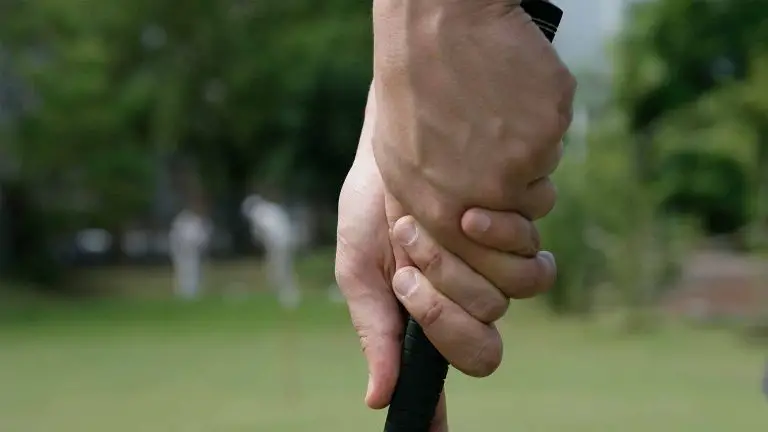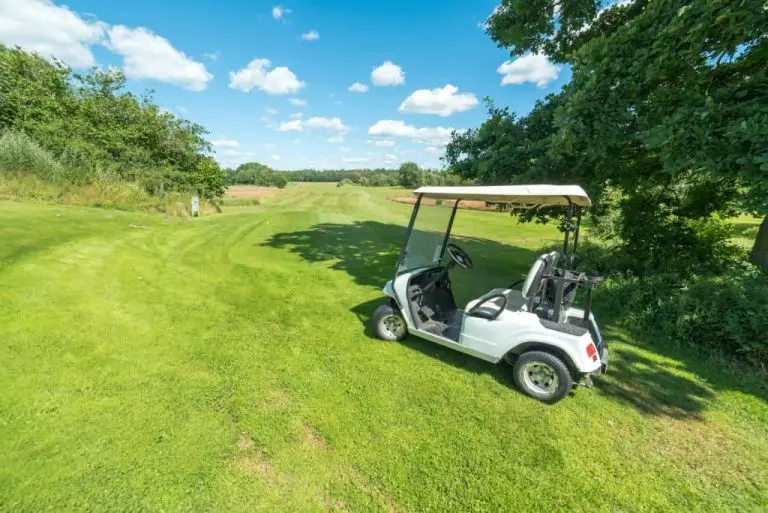What Does Up And Down Mean In Golf
Welcome to the captivating world of golf, where precise swings, strategic decision-making, and an intricate vocabulary combine to create a unique sporting experience. As you embark on your golfing journey, you’ll encounter numerous terms and phrases that may leave you intrigued. One such phrase that often arises in golf discussions is “up and down.” In this article, we will delve into the meaning and significance of “up and down” in the realm of golf.
When golfers refer to an “up and down,” they are describing a specific sequence of shots played around the green. This phrase represents the art of recovering from a challenging situation after missing the green in regulation. It showcases a golfer’s skill and finesse in executing a chip or pitch shot followed by a single putt to either save par or minimize the damage by making a bogey.
In this comprehensive guide, we will explore the definition, techniques, strategic considerations, and the impact of successfully achieving an “up and down” in golf. We will navigate through the intricacies of chip shots, putting strokes, and decision-making processes that come into play when faced with challenging lies and circumstances around the green.
So, join us as we uncover the secrets behind the “up and down” in golf and unlock the keys to successfully navigating the greens with precision and finesse. Get ready to elevate your short game and experience the thrill of conquering the challenges that golf presents with the artful execution of the “up and down” technique.

What is the Definition of “Up and Down” in Golf?
When golfers refer to an “up and down,” they are describing a specific sequence of shots played around the green. In essence, an “up and down” refers to the successful execution of a chip or pitch shot followed by a single putt to save par or make a bogey after missing the green in regulation. It is a skillful recovery technique that showcases a golfer’s short game prowess and ability to navigate challenging situations.
The term “up” in “up and down” refers to the first shot played from a difficult lie or position around the green, often requiring precision and touch to land the ball close to the hole. The subsequent “down” refers to the ensuing putt, which ideally completes the recovery by holing the ball with one stroke. This combination of shots allows golfers to salvage their score and avoid more significant strokes penalties on a given hole.
To better understand the concept of “up and down,” let’s explore how it is achieved in golf.
How is “Up and Down” Achieved in Golf?
Achieving an “up and down” in golf requires a combination of skill, strategy, and execution. Golfers must employ various techniques to navigate the unique challenges presented by different lies and distances around the green. Let’s delve into the process and techniques involved in successfully executing an “up and down.”
Chip Shots: Mastering the “Up”
The first component of an “up and down” is the chip shot, played from a difficult lie around the green. A chip shot is a low trajectory shot intended to carry a short distance before rolling towards the hole. It requires precise club selection, control of swing speed, and a focus on accurate ball contact.
Golfers have an array of clubs at their disposal for chip shots, including wedges, pitching wedges, or even putters, depending on the lie and the desired trajectory. By selecting the appropriate club and utilizing proper technique, golfers can chip the ball close to the hole, setting themselves up for the subsequent putt.
Putts: Nailing the “Down”
The second component of an “up and down” is the putt. After executing the chip shot, golfers face the challenge of holing the ball in the fewest strokes possible. Putting requires precision, touch, and a keen understanding of the greens’ speed and slope.
Golfers must read the green, assess the break and speed, and make a confident stroke to roll the ball into the hole. The ability to judge distance, control the speed of the putt, and maintain a consistent putting stroke are essential for successful “downs” in the “up and down” sequence.
Now that we understand the process of achieving an “up and down,” let’s explore the circumstances that call for this recovery technique.
When is an “Up and Down” Necessary in Golf?
The need for an “up and down” arises when a golfer misses the green in regulation and faces the challenge of salvaging par or avoiding a higher score. Several scenarios call for an “up and down,” and understanding these situations is crucial for effective course management and scoring. Let’s examine some of the circumstances that warrant an “up and down.”
Missing the Green in Regulation
A golfer’s ability to hit the green in regulation means reaching the putting surface in the specified number of strokes for the hole. However, there are times when golfers fall short and find themselves in a challenging position around the green. This can happen due to errant approach shots, difficult pin positions, or unpredictable course conditions.
When a golfer misses the green in regulation, they face the risk of adding extra strokes to their score. This is where the “up and down” comes into play. By executing a successful chip shot followed by a well-judged putt, golfers can rescue their score by either saving par or minimizing the damage with a bogey.
Recovery from Bunkers or Rough
The need for an “up and down” becomes particularly crucial when a golfer finds themselves in a bunker or thick rough around the green. These challenging lies often require delicate touch and precise execution to escape the hazard and position the ball for a putt. Mastering the art of recovering from such difficult lies is essential for golfers to consistently achieve successful “up and downs.”
Short Par-4 Holes
Short par-4 holes present another common scenario where an “up and down” can come into play. On these holes, golfers often face strategic decisions off the tee. If a golfer opts for an aggressive play and falls short, they may end up around the green with a chance for an “up and down” to secure a birdie or save par. It requires calculated shot selection, execution, and a solid putting stroke to capitalize on these opportunities.
Now that we have explored the circumstances that call for an “up and down,” let’s delve into the key elements that contribute to a successful recovery.
What Are the Key Elements of a Successful “Up and Down”?
Achieving a successful “up and down” in golf requires a combination of technical skills, course management, and mental fortitude. Let’s break down the key elements that contribute to a golfer’s ability to save par or minimize their score through a successful recovery.
Shot Selection and Club Choice
Choosing the appropriate club for the chip shot is crucial to set up a successful “up and down.” Factors such as lie, distance to the hole, and the desired trajectory all play a role in club selection. Golfers must assess the situation, consider the available options, and select the club that gives them the best chance to execute the desired shot.
For example, when faced with a short chip shot, a golfer might opt for a higher-lofted wedge to get the ball up quickly and land it softly near the hole. On the other hand, a longer chip shot may require a lower-lofted club or a putter to roll the ball along the ground with precision.
Technique and Execution
Executing a successful chip shot requires proper technique and solid fundamentals. Key aspects include a stable stance, controlling the distance of the backswing and follow-through, maintaining a consistent tempo, and making clean contact with the ball. Golfers must also be mindful of the swing path and clubface alignment to achieve the desired trajectory and accuracy.
Additionally, an effective putting stroke is crucial for a successful “down” in the “up and down” sequence. This involves a smooth pendulum-like motion, alignment with the intended target line, and a controlled acceleration through impact. Golfers should develop a putting stroke that allows them to control both the speed and direction of the putt, giving them the best chance to hole the ball with confidence.
Course Management and Decision Making
Successful “up and downs” require strategic decision making and smart course management. Golfers need to assess the lie, evaluate the available options, and choose the shot that gives them the highest probability of success. This may involve considering factors such as green slope, obstacles, and the desired landing area. Making informed decisions based on the situation at hand contributes to better outcomes when attempting an “up and down.”
Furthermore, golfers should take into account the risk-reward aspect of the recovery shot. Sometimes, playing a more conservative shot to ensure a safe “up and down” and secure a bogey may be the smarter choice, rather than attempting a more aggressive shot that could lead to further trouble.
Mental Focus and Confidence
The mental aspect of executing an “up and down” should not be overlooked. Golfers need to maintain focus, stay composed, and have confidence in their abilities when faced with a challenging recovery shot. It is essential to visualize the desired outcome, trust the chosen shot, and commit fully to the execution. A positive mindset and self-belief can make a significant difference in achieving a successful recovery.
By incorporating these key elements into their game, golfers can improve their chances of successfully completing an “up and down” and minimizing their score on challenging holes.
Now that we understand the key elements of a successful “up and down,” let’s explore how this recovery technique affects a golfer’s score.
How Does an “Up and Down” Affect a Golfer’s Score?
An “up and down” has a direct impact on a golfer’s score and can significantly influence their overall performance on the course. Let’s examine how successfully completing an “up and down” affects a golfer’s score and the scoring implications it carries.
Saving Par or Making Bogey
The primary objective of an “up and down” is to save par or make bogey after missing the green in regulation. By executing a successful chip shot to position the ball near the hole and subsequently holing the putt, a golfer can avoid dropping additional strokes on the hole. This ability to rescue the score can provide a sense of relief and momentum, boosting confidence and minimizing the impact of a wayward approach shot.
Scoring on Individual Holes
The ability to consistently achieve successful “up and downs” positively impacts scoring on individual holes. By salvaging par or minimizing the damage with a bogey, golfers can prevent a hole from turning into a higher-scoring disaster. This contributes to maintaining a steady and consistent scoring pattern throughout the round.
For example, let’s consider a scenario where a golfer misses the green in regulation on a par-4 hole but successfully executes an “up and down” to save par. By avoiding a dropped shot and scoring par on that hole, the golfer preserves their momentum and keeps their score in check.
Confidence and Momentum
Achieving successful “up and downs” not only affects the score but also influences a golfer’s mental state on the course. Each successful recovery builds confidence and provides a sense of accomplishment. The ability to navigate difficult situations and recover with finesse can create a positive momentum that carries forward to subsequent holes, boosting overall performance.
By understanding the impact of “up and downs” on scoring, golfers can appreciate the significance of this recovery technique and work towards enhancing their proficiency in the short game.
Now that we have explored the impact of “up and downs” on a golfer’s score, let’s address some common challenges golfers face when attempting this recovery technique.
What Are Some Common Challenges in Achieving an “Up and Down”?
Executing a successful “up and down” can be a challenging task, even for skilled golfers. Various factors and obstacles can complicate the recovery shot and putt, making it crucial to develop strategies to overcome these challenges. Let’s delve into some of the common difficulties golfers encounter when attempting an “up and down” and explore techniques to overcome them.
Difficult Lies and Uneven Terrain
Golfers often face challenging lies and uneven terrain around the green, making the execution of an “up and down” more demanding. Thick rough, deep bunkers, or awkward lies can affect club selection, ball contact, and the ability to control distance and trajectory. Additionally, uneven surfaces and slopes can influence the roll and break of the putt, requiring a heightened level of skill and precision.
To overcome these challenges, golfers should focus on developing versatility in their short game shots. This involves practicing various types of lies and terrains, such as practicing from deep rough, uphill lies, or tight lies. By simulating challenging scenarios during practice sessions, golfers can gain confidence and adaptability to handle difficult lies encountered on the course.
Pressure and Mental Strain
The pressure of a critical recovery shot can significantly impact a golfer’s ability to execute an “up and down.” Nerves, anxiety, or overthinking can lead to tense muscles and decreased focus, affecting the quality of the chip and putt. Managing pressure and maintaining a calm mindset is crucial for success.
To mitigate the mental strain, golfers can adopt pre-shot routines and mental strategies. Deep breathing exercises, visualization techniques, and positive self-talk can help golfers relax and maintain focus during critical moments. Building mental resilience through practice and experience can enhance a golfer’s ability to perform under pressure.
Inadequate Club Selection and Shot Execution
Choosing the wrong club for the chip shot or failing to execute the desired shot can hinder the success of an “up and down.” Incorrect club selection may result in overshooting or falling short of the intended target, making the subsequent putt more challenging. Poor execution, such as misjudging the speed or mishitting the chip shot, can also lead to undesirable outcomes.
To address these challenges, golfers should practice club selection and shot execution in various scenarios. This involves understanding the characteristics of different clubs, such as their loft and bounce, and how they interact with different lies and distances. Consistent practice and experimentation can help golfers develop a repertoire of shots and refine their decision-making process.
By recognizing and proactively addressing these common challenges, golfers can increase their chances of achieving successful “up and downs” and navigate the course with greater confidence.
Now that we have explored the challenges of executing an “up and down,” let’s delve into strategies and techniques golfers can employ to improve their skills in this aspect of the game.
How Can Golfers Improve Their “Up and Down” Skills?
Improving “up and down” skills requires a combination of practice, technique refinement, and a solid understanding of the short game. Let’s explore some strategies and techniques golfers can employ to enhance their ability to successfully execute recovery shots and putts.
Develop a Strong Short Game Practice Routine
Consistent and focused practice is essential to improve “up and down” skills. Dedicate specific practice sessions to the short game, including chip shots from various lies and distances, as well as putting drills that emphasize distance control and accuracy.
Creating a structured practice routine allows golfers to target specific areas for improvement. Allocate time for practicing different types of chip shots, experimenting with club selection, and refining putting stroke mechanics. By practicing under varying conditions and scenarios, golfers can build confidence and develop the necessary touch and feel required for successful “up and downs.”
Utilize Training Aids and Technology
Training aids and technology can be valuable tools for improving “up and down” skills. Utilize aids such as alignment sticks, putting mirrors, or chipping nets to refine technique, develop consistent strokes, and enhance alignment. Additionally, golfers can use launch monitors or simulators to analyze shot data and gain insights into areas of improvement.
Technology-enabled practice allows golfers to measure performance, track progress, and identify areas of weakness. By leveraging these resources, golfers can receive instant feedback and make necessary adjustments to improve their “up and down” skills.
Seek Professional Guidance
Working with a golf instructor or coach specializing in the short game can provide invaluable guidance and feedback. These professionals can assess a golfer’s technique, offer personalized instruction, and suggest specific drills to address weaknesses and enhance strengths. Their expertise and experience can accelerate skill development and help golfers fine-tune their “up and down” abilities.
Play Different Courses and Practice Various Lies
Golfers can further enhance their “up and down” skills by exposing themselves to a variety of course conditions and lies. Playing different courses with varying green speeds, rough densities, and bunker designs can provide valuable experience in adapting to different scenarios. By practicing from different lies, such as tight lies, uphill lies, or downhill lies, golfers can develop the ability to adjust their technique and execute successful recovery shots in diverse situations.
Learn from the Pros
Observing and studying professional golfers can provide insights and inspiration for improving “up and down” skills. Watch professional tournaments, analyze their short game techniques, and pay attention to their decision-making processes. Many professional golfers share tips, tutorials, and insights through interviews, instructional videos, and social media platforms. Learning from their experiences and adopting their strategies can help golfers refine their own approach to recovery shots and putting.
By incorporating these strategies into their practice routines and overall approach to the short game, golfers can elevate their “up and down” skills and improve their performance on the course.
Conclusion
Mastering the art of the “up and down” in golf is a valuable skill that can significantly impact a golfer’s scoring ability and overall performance. By understanding the definition, techniques, challenges, and strategies associated with successful recovery shots and putts, golfers can enhance their short game proficiency and navigate the course with confidence.
Remember, achieving successful “up and downs” requires a combination of technical skill, strategic decision making, mental fortitude, and consistent practice. By dedicating time and effort to develop these aspects of your game, you can become proficient in executing recovery shots and putting, ultimately improving your scoring ability and enjoying greater success on the golf course. So, embrace the challenges, refine your skills, and experience the satisfaction of successfully navigating the ups and downs of the game of golf.





